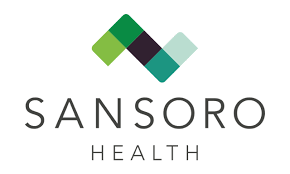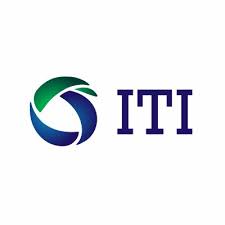FHIR
See the following -
Open mHealth Popular Standard (Part 3)

The first section of this article introduced the common schemas for mobile healthdesigned by Open mHealth, and the second section covered the first two design principles driving their schemas. We’ll finish off the design principles in this section. Here, the ideal is to get accurate measurements to the precision needed by users and researchers. But many devices are known to give fuzzy results, or results that are internally consistent but out of line with absolute measurements. The goal adopted by Open mHealth is to firm up the things that are simple to get right and also critical to accuracy, such as units of measurement discussed earlier. They also require care in reporting the time interval that a measurement covers: day, week, month. There’s no excuse if you add up the walks recorded for the day and the sum doesn’t match the total steps that the device reports for that day...
- Login to post comments
Open Source EHRs: Will They Support Clinical Data Needs of the Future? (Part 2 of 2)
The first part of this article provided a view of the current data needs in health care and asked whether open source electronic health records could solve those needs. I’ll pick up here with a look at how some open source products deal with the two main requirements I identified: interoperability and analytics. Interoperability, in health care as in other areas of software, is supported better by open source products than by proprietary ones. Read More »
openEHR: A Game Changer Comes of Age
 I’ve been watching openEHR over more than fifteen years and have always been impressed by its potential to enable us to do things differently, but it’s been a slow burn, with limited take up, particularly in the United Kingdom (UK) where it was invented. However, recent developments mean that I think this is about to change and that openEHR is going to take off in a big way which is going to revolutionize how we think about and do digital health and increase the speed at which we can do it by at least two orders of magnitude. Why do I say this and what evidence is there to support my assertion?
I’ve been watching openEHR over more than fifteen years and have always been impressed by its potential to enable us to do things differently, but it’s been a slow burn, with limited take up, particularly in the United Kingdom (UK) where it was invented. However, recent developments mean that I think this is about to change and that openEHR is going to take off in a big way which is going to revolutionize how we think about and do digital health and increase the speed at which we can do it by at least two orders of magnitude. Why do I say this and what evidence is there to support my assertion?
- Login to post comments
OSCAR Pro EMR Becomes First Canadian EMR and Telehealth Platform to Offer Health Records on iPhone
 WELL Health Technologies Corp...today announced Health Records on iPhone is now rolling out for clinicians and patients across WELL's primary care clinics, EMR network, Tia Health virtual care service and "apps.health" marketplace. Health Records on iPhone allows patients to securely view and store their own available medical records from multiple providers right in the Apple Health app on their iPhone or iPod touch, with their privacy and data protected at all times. "Delivering on patient-centric healthcare and patient enablement is a big part of WELL's overarching mission and vision. For this reason, we are delighted to be the first telehealth and Canadian EMR platform in Canada to offer Health Records and enable patients to download and view their health information on iPhone," said Hamed Shahbazi, Chairman and CEO of WELL.
WELL Health Technologies Corp...today announced Health Records on iPhone is now rolling out for clinicians and patients across WELL's primary care clinics, EMR network, Tia Health virtual care service and "apps.health" marketplace. Health Records on iPhone allows patients to securely view and store their own available medical records from multiple providers right in the Apple Health app on their iPhone or iPod touch, with their privacy and data protected at all times. "Delivering on patient-centric healthcare and patient enablement is a big part of WELL's overarching mission and vision. For this reason, we are delighted to be the first telehealth and Canadian EMR platform in Canada to offer Health Records and enable patients to download and view their health information on iPhone," said Hamed Shahbazi, Chairman and CEO of WELL.
- Login to post comments
OSEHRA 2017: Open Source Becomes Mainstream in the Healthcare Industry
 One of the most exciting things about the OSEHRA 2017 Open Source Summit was to see so many leading edge open source health IT solutions, and to hear reports of the major strides they are making around the world. Our very own Editor-in-Chief, Roger A. Maduro gave a presentation on the state of open health IT. The room was absolutely packed, with standing room only. Maduro started his presentation by pointing out that during the recent HIMSS17 conference in Orlando, Florida, more than half of of the 300 sessions of the conference were based on open source solutions such as FHIR, Blockchain, Interoperability and the open/modular IT strategy being followed by Medicaid.
One of the most exciting things about the OSEHRA 2017 Open Source Summit was to see so many leading edge open source health IT solutions, and to hear reports of the major strides they are making around the world. Our very own Editor-in-Chief, Roger A. Maduro gave a presentation on the state of open health IT. The room was absolutely packed, with standing room only. Maduro started his presentation by pointing out that during the recent HIMSS17 conference in Orlando, Florida, more than half of of the 300 sessions of the conference were based on open source solutions such as FHIR, Blockchain, Interoperability and the open/modular IT strategy being followed by Medicaid.
- Login to post comments
OSEHRA's Synthetic Patient Data Project Group Releases End-to-End Open Source Patient Data Software Package
 OSEHRA's Synthetic Patient Data Open Source Project Group is proud to announce the release of their end-to-end open source patient data software package. Sponsored by Perspecta Inc., an OSEHRA Organizational Member, this group has worked for more than a year to make it possible for users to generate, visualize, and ingest synthetic patient data with a single command. "The lack of realistic clinical data that mimics the volume, velocity, and variety of real-world patient records has been an impediment to health IT development, testing, and simulation," said Bo Dagnall, chair of the Project Group and Chief Technologist and Strategist for Perspecta's Health Business Group.
OSEHRA's Synthetic Patient Data Open Source Project Group is proud to announce the release of their end-to-end open source patient data software package. Sponsored by Perspecta Inc., an OSEHRA Organizational Member, this group has worked for more than a year to make it possible for users to generate, visualize, and ingest synthetic patient data with a single command. "The lack of realistic clinical data that mimics the volume, velocity, and variety of real-world patient records has been an impediment to health IT development, testing, and simulation," said Bo Dagnall, chair of the Project Group and Chief Technologist and Strategist for Perspecta's Health Business Group.
- Login to post comments
Problems with Health Information Exchange Resist Cures (Part 1)
 Given that Office of the National Coordinator for Health Information Technology (ONC) received 564 million dollars in the 2009 HITECH act to promote health information exchange, one has to give them credit for carrying out a thorough evaluation of progress in that area. The results? You don’t want to know. There are certainly glass-full as well as glass-empty indications in the 98-page report that the ONC just released. But I feel that failure dominated. Basically, there has been a lot of relative growth in the use of HIE, but the starting point was so low that huge swaths of the industry remain untouched by HIE...
Given that Office of the National Coordinator for Health Information Technology (ONC) received 564 million dollars in the 2009 HITECH act to promote health information exchange, one has to give them credit for carrying out a thorough evaluation of progress in that area. The results? You don’t want to know. There are certainly glass-full as well as glass-empty indications in the 98-page report that the ONC just released. But I feel that failure dominated. Basically, there has been a lot of relative growth in the use of HIE, but the starting point was so low that huge swaths of the industry remain untouched by HIE...
- Login to post comments
Regarding Open Source, Security, and Cloud Migration, Old Prejudices Die Hard in Health Care
 Although the health care industry has made great strides in health IT, large numbers of providers remain slow to reap the benefits of a “digital transformation”. Health care organizations focus on what they get paid for and neglect other practices that would improve care and security. At conferences and meetings year and after year, I have to listen to health care leaders tediously explode the same myths and explain the same principles over and over. In this article I'll concentrate on the recent EXPO.health conference, put on in Boston by John Lynn's Healthcare Scene, where the topics of free and open source EHRs, security, and cloud migration got mired down in rather elementary discussions.
Although the health care industry has made great strides in health IT, large numbers of providers remain slow to reap the benefits of a “digital transformation”. Health care organizations focus on what they get paid for and neglect other practices that would improve care and security. At conferences and meetings year and after year, I have to listen to health care leaders tediously explode the same myths and explain the same principles over and over. In this article I'll concentrate on the recent EXPO.health conference, put on in Boston by John Lynn's Healthcare Scene, where the topics of free and open source EHRs, security, and cloud migration got mired down in rather elementary discussions.
- Login to post comments
Report on the ONC 2017 Technical Interoperability Forum
 Last week I attended with my colleague Mike Berry the ONC 2017 Technical Interoperability Forum. This meeting was convened under the 21st Century Cures Act passed by Congress in late 2016. Several hundred participants attended a series of panel presentations and discussions. The forum took place over one-and-a-half-days. The forum covered a variety of topics related to interoperability, including discussion of the business case for interoperability, semantics, national networks, and application programming interfaces (APIs). In many ways the speakers were “the usual suspects” involved in national networks, standards development, and HIE planning and implementation.
Last week I attended with my colleague Mike Berry the ONC 2017 Technical Interoperability Forum. This meeting was convened under the 21st Century Cures Act passed by Congress in late 2016. Several hundred participants attended a series of panel presentations and discussions. The forum took place over one-and-a-half-days. The forum covered a variety of topics related to interoperability, including discussion of the business case for interoperability, semantics, national networks, and application programming interfaces (APIs). In many ways the speakers were “the usual suspects” involved in national networks, standards development, and HIE planning and implementation.
- Login to post comments
Sansoro Health Record API Will Unite Them All
 After some seven years of watching the US government push interoperability among health records, and hearing how far we are from achieving it, I assumed that fundamental divergences among electronic health records at different sites posed problems of staggering complexity. I pricked up my ears, therefore, when John Orosco, CTO of Sansoro Health, said that they could get EHRs to expose real-time web services in a few hours, or at most a couple days.
After some seven years of watching the US government push interoperability among health records, and hearing how far we are from achieving it, I assumed that fundamental divergences among electronic health records at different sites posed problems of staggering complexity. I pricked up my ears, therefore, when John Orosco, CTO of Sansoro Health, said that they could get EHRs to expose real-time web services in a few hours, or at most a couple days.
- Login to post comments
Tech Industry Pledges to Improve Healthcare Through Open Source Health IT
 Today, ITI President and CEO Dean Garfield and several ITI member companies participated in the Blue Button 2.0 Developer Conference at the White House where they announced their commitment to removing barriers for the adoption of technologies for healthcare interoperability, particularly those that are enabled through the cloud and AI...“Today’s announcement will be a catalyst to creating better health outcomes for patients at a lower cost,” said ITI president and CEO Dean Garfield. “As transformative technologies like cloud computing and artificial intelligence continue to advance, it is important that we work towards creating partnerships that embrace open standards and interoperability.
Today, ITI President and CEO Dean Garfield and several ITI member companies participated in the Blue Button 2.0 Developer Conference at the White House where they announced their commitment to removing barriers for the adoption of technologies for healthcare interoperability, particularly those that are enabled through the cloud and AI...“Today’s announcement will be a catalyst to creating better health outcomes for patients at a lower cost,” said ITI president and CEO Dean Garfield. “As transformative technologies like cloud computing and artificial intelligence continue to advance, it is important that we work towards creating partnerships that embrace open standards and interoperability.
- Login to post comments
The Argonaut Project Charter
Yesterday, a group of private sector stakeholders including athenahealth, Beth Israel Deaconess Medical Center, Cerner, Epic, Intermountain Health, Mayo Clinic, McKesson, MEDITECH, Partners Healthcare System, SMART at Boston Children’s Hospital Informatics Program, and The Advisory Board Company met with HL7 and FHIR leadership to accelerate query/response interoperability under the auspices of ANSI-certified HL7 standards development organization processes.
- Login to post comments
Two New Federal Reports Released That Have Major Public Health Impacts
 Two new Federal reports were recently released that have a public health impact. First, the Office of the National Coordinator for Health Information Technology (ONC) released its 2022 Report to Congress: Update on Access, Exchange, and Use of Electronic Health Information. This report covers the current state of adoption of health information technology and access to electronic health information guided largely by the requirements of the 2016 21st Century Cures Act. The report observes that, “Although tremendous progress has been made with EHRs that capture and support the use of health information about individuals, the COVID-19 pandemic exposed gaps in health IT systems that support capturing and using population data. The challenges exposed during the public health response to the COVID-19 pandemic pinpointed the importance of health IT to monitor population health regarding public health surveillance of testing, diagnosis, and vaccine distribution.”
Two new Federal reports were recently released that have a public health impact. First, the Office of the National Coordinator for Health Information Technology (ONC) released its 2022 Report to Congress: Update on Access, Exchange, and Use of Electronic Health Information. This report covers the current state of adoption of health information technology and access to electronic health information guided largely by the requirements of the 2016 21st Century Cures Act. The report observes that, “Although tremendous progress has been made with EHRs that capture and support the use of health information about individuals, the COVID-19 pandemic exposed gaps in health IT systems that support capturing and using population data. The challenges exposed during the public health response to the COVID-19 pandemic pinpointed the importance of health IT to monitor population health regarding public health surveillance of testing, diagnosis, and vaccine distribution.”
- Login to post comments
Uncontrolled Health Care Costs Traced to Data and Communication Failures
 The previous section of this article provided whatever detail I could find on the costs of poor communications and data exchange among health care providers. But in truth, it’s hard to imagine the toll taken by communications failures beyond certain obvious consequences, such as repeated tests and avoidable medical errors. One has to think about how the field operates and what we would be capable of with proper use of data. As patients move from PCP to specialist, from hospital to rehab facility, and from district to district, their providers need not only discharge summaries but intensive coordination to prevent relapses. Our doctors are great at fixing a diabetic episode or heart-related event...
The previous section of this article provided whatever detail I could find on the costs of poor communications and data exchange among health care providers. But in truth, it’s hard to imagine the toll taken by communications failures beyond certain obvious consequences, such as repeated tests and avoidable medical errors. One has to think about how the field operates and what we would be capable of with proper use of data. As patients move from PCP to specialist, from hospital to rehab facility, and from district to district, their providers need not only discharge summaries but intensive coordination to prevent relapses. Our doctors are great at fixing a diabetic episode or heart-related event...
- Login to post comments
VetAdvisor Deploys SugarCRM to Create a World-Class Veteran Relationship Management Platform
VetAdvisor, the nation’s expert in veteran-centric holistic care, has rapidly expanded its reach to military veterans through its recent deployment of the SugarCRM customer relationship management (CRM) platform. Leveraging SugarCRM’s advanced open source CRM platform, VetAdvisor is able to provide proactive coaching services across behavioral health, wellness, financial, and all aspects of transition and career development.
- Login to post comments